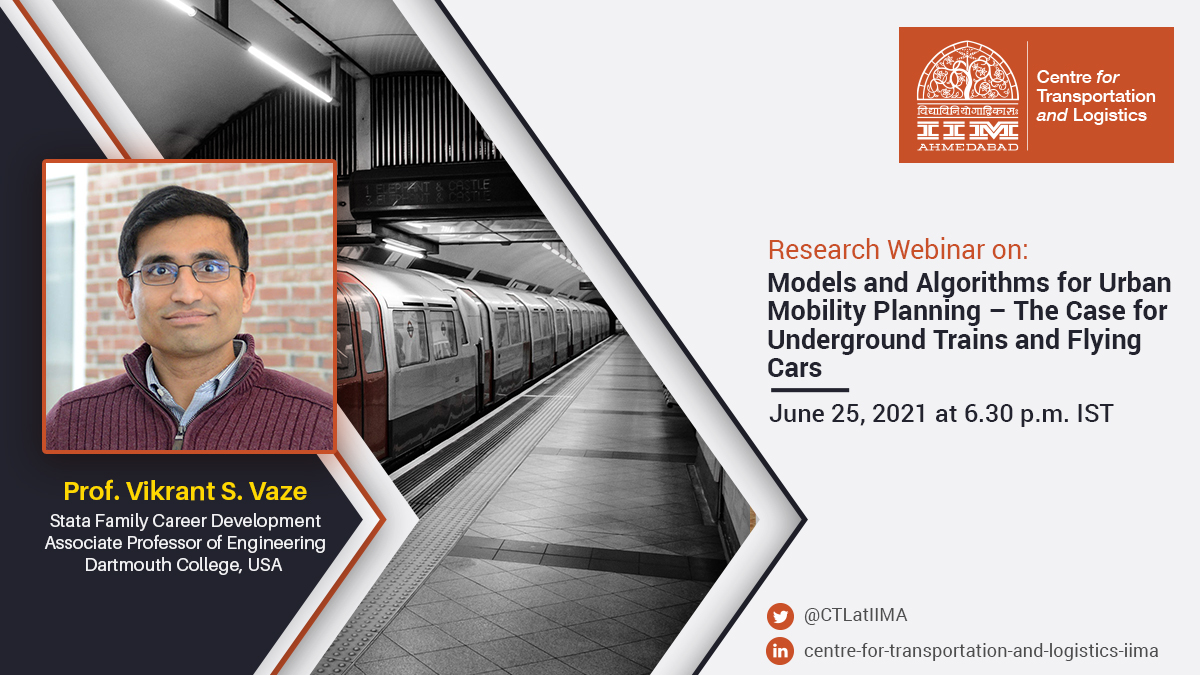
25/06/2021

Abstract
Fast-growing needs for urban mobility are worsening congestion, energy use, and greenhouse gas emissions. At the same time, the sector is being rapidly transformed by on-demand businesses and new vehicle technologies. Long-term sustainable mobility growth requires developing novel technology, business and policy solutions. This talk focuses on two such specific solutions. First, despite their various benefits, ride-hailing platforms like Uber, Ola and Didi have also been associated with increased road congestion and declining public transit ridership. In the first half of this talk we focus on the following question: Can public transit and ride-hailing co-exist and thrive in a way that enhances the urban transportation ecosystem as a whole? We develop a new mathematical model and a novel computational framework optimizing transit schedules, while explicitly accounting for their impacts on road congestion and passenger mode choice. We demonstrate that, through better alignment of transit services with passengers’ preferences and ride-hailing services, transit agencies can lower costs for passengers, operators and the system as a whole—a rare win-win-win outcome.
Second, electric vertical-takeoff-and-landing (eVTOL) vehicles enable a new form of transportation known as Urban Aerial Mobility (UAM). This second half of the talk focuses on optimizing the number, location and capacity of vertiports in a metropolitan area. We capture interdependencies between strategic vertiport deployment, tactical UAM operations and customer adoption. We develop an original exact algorithm based on adaptive discretization and provide a provable solution quality guarantee. Results indicate that the optimal UAM networks vary widely across metropolitan areas, as a function of geographic, urban and commuting patterns. Vertiport networks grow in a nested fashion, starting with a few “obvious” vertiports and adding vertiports as penetration increases. We uncover two potential use cases for UAM technologies: airport shuttle and long-distance commutes.
About the Speaker
Dr. Vikrant Vaze is Stata Family Career Development Associate Professor and the Program Area Lead of Mechanical, Operations and Systems Engineering at Dartmouth College. He is also a Research Affiliate in the Department of Aeronautics and Astronautics at Massachusetts Institute of Technology (MIT). He has an MS in Transportation, another MS in Operations Research and a PhD in Transportation Systems, all from MIT. He has a BTech in Civil Engineering from the Indian Institute of Technology Bombay. He works on solving large-scale transportation problems involving consumer choice modeling, schedule planning, and disruption management using optimization, game theory, and machine learning. He is the recipient of the US National Science Foundation’s Career Award, MIT Presidential Fellowship, President of India Medal, Best PhD Dissertation Award from the Council of University Transportation Centers, and several best paper awards.
